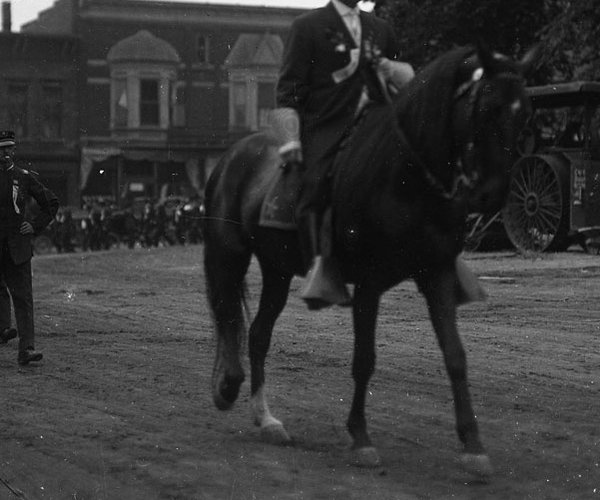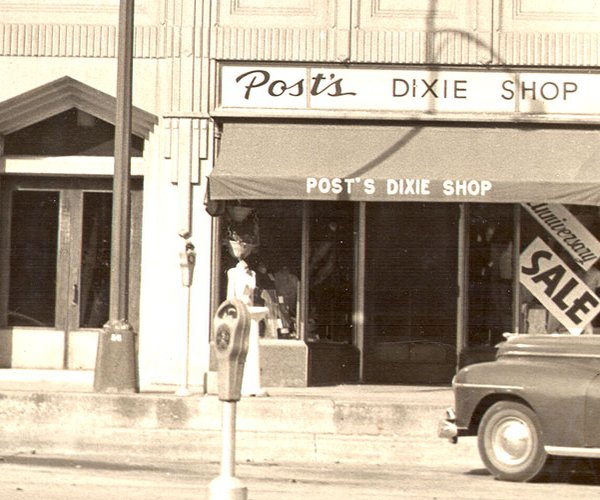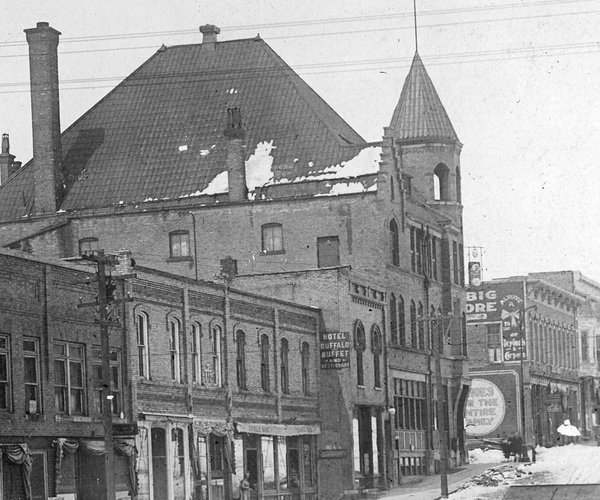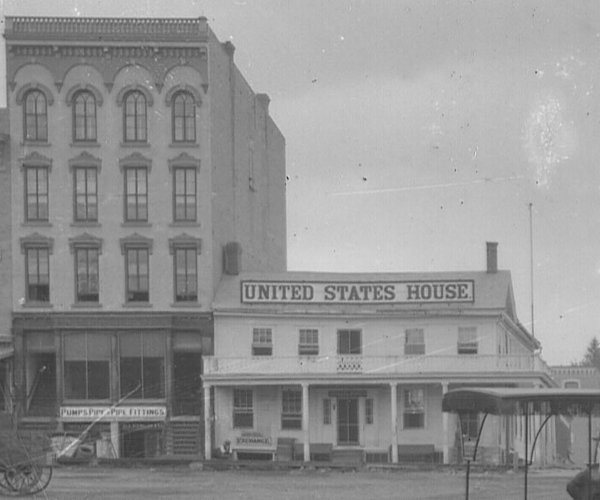The headline in the Monroe Evening Times on April 12, 1923 stated, “Real Surprise for Kiwanis Men Today.” The article said, “The Kiwanis club was treated to a real surprise and a capital spread at the regular noon day meeting which was held at the Borden plant.” Superintendent George Carr had invited them for an inspection visit. Almost the entire membership attended and it was considered “a most happy club event.” High compliments were given to the Borden company for their generous entertainment of the club.
“The Borden way of preparing the fresh milk of our dairy farms for the market of the world was explained to the club members who gathered at the plant at 11 o’clock and made a tour of the plant, starting at the receiving room and ending in the storage rooms. Much interest was taken in the filling, sealing, and labeling of the cans, all done with labor saving machinery, and when members were asked to write down the number of cans handled in a day, there were many thousands within the range of wild guesses.”
The machine had a capacity of 124 cans per minute, but was running at 180. The machine had handled 45,324 cans the previous day. Peter Solomon had the closest guess of 45,600 with Everett Keel next with 45,000.
Once the tour of the plant was completed, the guests passed single file into one of the stock rooms on the office floor of the main building. Tables were set up for the guests and 20 or more domestic science girls from the junior high school were waiting with “a dairy lunch that exceeded all expectations and won generous praise.” Miss Ellen R. Brainard was ”the very competent instructor” in charge of the girls. It was a meatless lunch featuring Green County cheese croquettes “that were most delicious.” Milk and water were served in Borden bottles; there were warm scalloped potatoes, warm graham muffins, fresh fruit salad, creamy vegetable salad, Swiss cheese, and angel food cake “with honest to goodness cream, and lots of it. The quality of the spread and its serving set a new standard for the Kiwanians.”


In addition to the Kiwanians, J. G. Watrous, district Borden superintendent, was present. He spoke briefly on the difficulties of the milk industry, which he said were no different than in other lines of industry. He thought if there was better understanding of the difficulties in business, it would be better for all concerned. “In the matter of milk prices, he said, they are determined upon an accurate system of calculation in which the markets of the world enter.”
Superintendent Carr “expressed his pleasure in having the club at the plant and in having closer acquaintance with the members, which had resulted in a better spirit of cooperation in the city.” In the 22 years that Borden’s had operated the Monroe plant, there had been an increase of 75% in the milk production of the territory. This was not due entirely to Bordens, but definitely added to the prosperity of Green County. J. D. Dunwiddie thanked Mr. Carr “not only for the ‘feed,’ but the emphasis it placed upon the teaching of one of the Kiwanis principles in ideals.” This meeting ended with the singing of “He’s a Jolly Good Fellow” with vigor to Mr. Carr.
With that meeting having been so successful, the Kiwanis club members and their guests returned to the Borden plant at noon on October 23. This time the ”delicious dairy luncheon” was prepared and served by 12 high school girls under the direction of Miss Gertrude Flanigan, domestic science teacher.
“Novel menu folders bearing the picture of a Holstein cow announced the light luncheon items as follows: cheese soufflé, stuffed green peppers, cottage cheese salad, rolls, butter, Boston cream pie, and milk.” The students had prepared the meal as part of their lessons at the high school, and the food was then transported to the Borden plant. A number of the Borden employees joined in the meal so that 85 were served at two long tables.
The Kiwanians held their regular meeting, but little business of importance was transacted. James Burns, state service officer of the American Legion, who was in Monroe for special work that day, gave a brief talk on rehabilitation of ex-servicemen.
The Kiwanis Club had been organized in Monroe in 1921, only two years before these meetings, with its first luncheon held at noon on May 12 in Ruf’s Garden. “More than three score of Monroe business men, being members of the newly organized Kiwanis club or guests, gathered.” Only five of the members were unable to attend. A number of guests were present. “The club, which only a few days ago qualified for a charter with the required 50 members, already has a role of 61.” The club voted to have 100 “Monroe” road signs placed on highways to direct tourists toward the city.
The Monroe Kiwanis club received its charter on Friday night July 15, 1921. The report the next day in the Monroe Evening Times stated, “Monroe’s lusty youngster in the way of reorganizations, the Kiwanis club, received its official baptism in the charter presentation ceremony and attendant festivities last night at Lincoln gymnasium.” The entire company numbered 175, seated at three tables covering the length of the gym. Club officers, speakers, and distinguished guests were seated at a smaller table on the north end of the room.
“Ladies of the Union Church earned many compliments and the hearty thanks of the club by carrying through with exceptional success the unusually large task of serving an admirable dinner most satisfactory, and having at great pains set the tables with flowers and other decorations that added much to the beauty and pleasure of the occasion.”
The event was “four hours of fun and song and serious eloquence.” Fortunately, the organization is still in existence more than 100 years later.
— Matt Figi is a Monroe resident and a local historian. His column will appear periodically on Saturdays in the Times. He can be reached at mfigi48@tds.net or at 608-325-6503.





